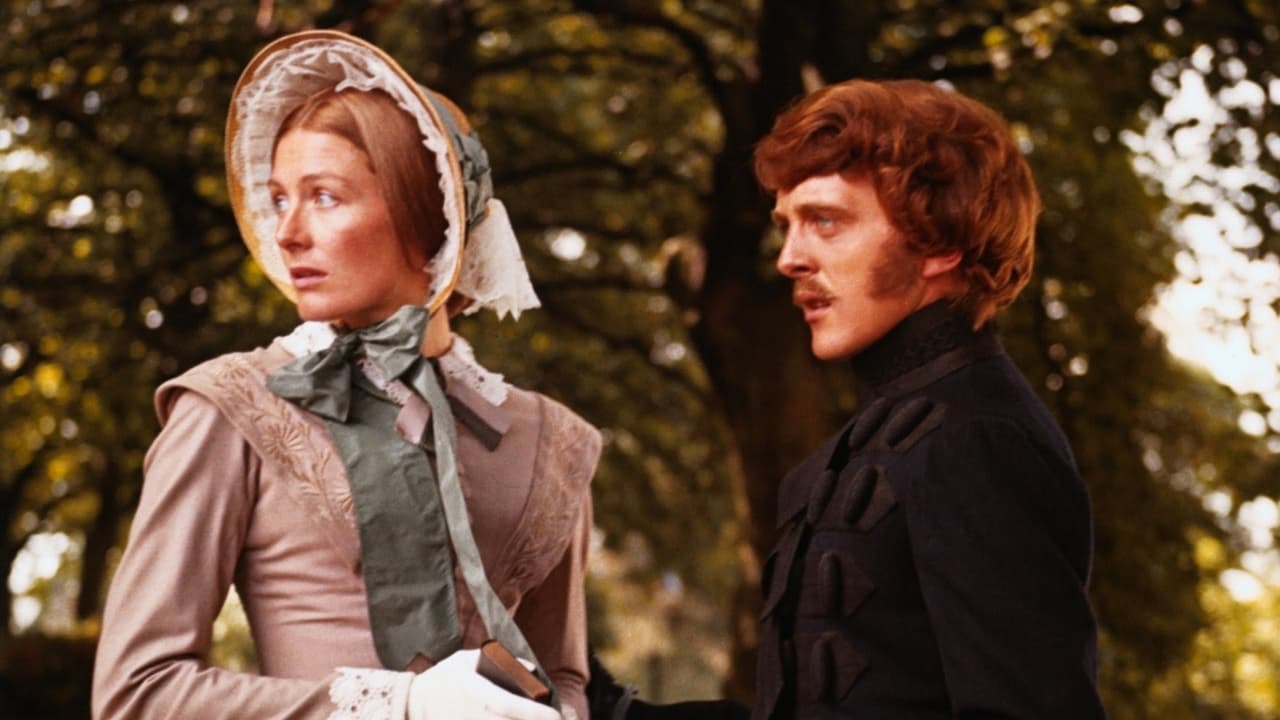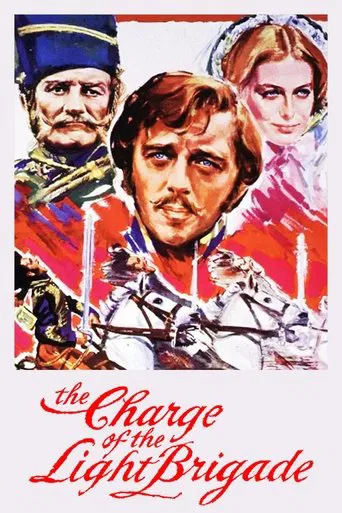

As Good As It Gets
... View Moreit is the rare 'crazy' movie that actually has something to say.
... View MoreNot sure how, but this is easily one of the best movies all summer. Multiple levels of funny, never takes itself seriously, super colorful, and creative.
... View MoreIt is neither dumb nor smart enough to be fun, and spends way too much time with its boring human characters.
... View MoreTony Richardson's film of 'The Charge of the Light Brigade' is, as has been said, not a re-make of the 1936 Errol Flynn film and more based on the book 'The Reason Why' than Tennyson's poem.Comparing the two, neither should be looked to as representation of true history (particularly the Flynn film, this version has a little more respect shown whereas history is cast to the wind in the earlier version). However, both are very good films in their own way with many merits while just falling short of greatness, hard to choose which is better. The Flynn film is perhaps more accessible, whereas some may be confused with some of Richardson's ideas and what he's trying to say.Richardson's 'The Charge of the Light Brigade' did have a couple of things that weren't quite right. David Hemmings is too stoic in the lead, while luminous Vanessa Redgrave's character is unnecessary tacked-on window dressing, with their romance bogging things down a little. There are parts where the pacing drags, as a result of a little too much show and not enough tell, meaning the odd scene that goes on a little too long.However, 'The Charge of the Light Brigade' is a visual stunner, the costumes are rich in detail, beautiful and effort clearly went into making them true to period. The sets and scenery also take the breath away and one can smell the atmosphere of the period, that's how effectively done the period detail is. This is all complemented wonderfully by exquisitely stark cinematography, and one cannot not mention the brilliant editing of the charge itself. Or the witty, beautifully animated and powerful animated sequences, that mirrors Richardson's emphasis on social context.John Addison's music score is haunting, while the script is always thought-provoking and intriguing, literate also without being overly-wordy, and Richardson directs meticulously. 'The Charge of the Light Brigade' boasts some genuinely powerful moments, especially the climactic charge itself (thundering even more so than that of the Flynn film), while other parts are chilling and the satirical elements positively blister. Much is said, and while not always subtly (subtlety never was Richardson's middle name) it makes its point and often powerfully.In terms of performances, Trevor Howard, John Gielgud and Harry Andrews have the more meatier roles than Hemmings and Redgrave, and they in particular stand out in a near-uniformly impressive cast. Howard's larger-than-life performance is particularly magnificent, with Gielgud close behind in one of his better performances. Andrews is chillingly funny.Summing up, very good and often stunning, but not for everybody. 8/10 Bethany Cox
... View MoreSometimes man is prone to reach for the stars, like Icarus he flies too high and falls short of his intentions. And, essentially this is what appears to happen in this story. Tony Richardson creates an ensemble of who's who of top British actors (in the 1960s), creates epic sets, and uses a massive amount of film, but the fundamental problem is that the thread of the story is not well bound into a cohesive narrative.Richardson tries to show us too much. It's as if he's spent so long setting up the scenes that he wants to show us how clever he was by showing everything. Part of this is to show how messy, chaotic and unglamourous war is, but if ever a director was to use a sledgehammer to crack a nut it would appear to be the case. One other reviewer has remarked to this extent, and I couldn't agree more. Some scenes are shot without dialogue, but would be tighter, more effective with a simple line and less lingering shots, for example when some of the men are dying of dysentery Hemmings gives his water can to a fellow cavalryman, he goes to drink from his canteen and then throws it away in disgust, which leaves the viewer uncertain if Hemmings character was worried about dysentery (and knew of the water born bacteria he might catch), or was disgusted that his men were dying so horribly before they even got to fight. But it is as if Richardson at every turn is holding your head and saying "here are the horrors of war, here is the unglamourous finish of men, look and look till you can look no more", but by the end you can't care about the characters, the soldiers or cavalry. They all appear to be such unbalanced and largely unsympathetic characters that you rather feel they get what they deserved. Generally film does history rather badly, distorting events, character and narrative to suit it's own purpose. I'm sure that happens here, so don't be surprised, but I think that Richardson in the end bites off more than he can chew. He doesn't manage to distill the story that he's trying to tell, instead shows more and in the end dilutes the story.While the film has flaws there are things to be got out of the film. The dialogue appears to use the Victorian parlance, the sets, costumes and visuals are sumptuous (for the time), and shows much of how the Western armies operated at that time. Apparently Richardson decided that the critics would not be allowed to see a preview of the film for the reason that he did not think them intelligent enough to understand it. If this is the case, then why did he think that the viewing public at large would be better situated to appreciate it. I guess Richardson knew that his film was a lumbering historical epic from which he was incapable of pulling a strong story, the morass of historical detail bogging it down. Sad, but a glorious failure. Much like the story told.
... View MoreMuch has been written on the ill fated charge at Balaklava,& therefore pointless to mention it's course in history, learn-ed reviewers have already covered this ground. It's Richardsons charge sequence which for me,is both exciting,& yet infuriating. Technically for a movie that spent along time in production, something approaching 3 years, uniform wise it is inaccurate. This, if your a student of history is like making a western with General Custer brandishing a Magnum 44. Technical advisers John/Andrew Mollo were mortified that after years of sourcing uniforms & equipment Richardson insisted that the 17th lancers were clothed in the red breeches of the 11th Hussars (Lord Cardigans regiment).He insisted this was for artistic reasons and that the Mollo's should pursue their own 'boringly accurate movie' if they were unhappy. Stunt co-coordinator Bob Simmons was unhappy that a number of exciting horse & rider stunts, some involving stunt men to be blown thru the air via air ramp were dismissed out of hand. War in the middle East robbed Richardson of his Turkish Guard Cavalry, (playing the Light Brigade), & David Watkins cinematography craftily conceals most of this shortfall. However there are a number of battle scenes shown in various trailers, that do not appear in the final cut. Time plays tricks, because when I saw the movie in 1968, I seem to remember some sequences during the charge which are not on the DVD R1 or R2. For a movie that portrays the infamous ride into history, Richardson only seems to dabble with it. One critic called it an 'anti epic'. This for me is why this really good film, could have been a really great film, because the charge should have been the last word in epic action for its time. It had all the right people to have created it. Ultimately a sad missed opportunity.However
... View MoreTony Richardson elects to go with Cecil Woodham Smith's historically accurate book instead of Tennyson's glorifying poem in this version of the oft filmed Charge of the Light Brigade. It is a sprawling epic richly constructed, sumptuously photographed (with some splendid animation interludes) and well acted by a prestigious cast but its lumbering pace removes the urgency from the the build-up and the film staggers.Brigade's anti-war theme deals with the unvarnished state of the military and the disparity between officer and enlisted man leading up to the climactic battle. Officers who live comfortably are petty, vain and incompetent while the enlisted live in cramped unhealthy hovels. It is only on the parade ground or assembling on the battle field they mix as a cohesive and splendid looking unit and Richardson remains intent on getting this across. Trevor Howard and Harry Andrews as the bickering and bumbling officers Cardigan and Lucan are magnificently and maddeningly vainglorious while John Gielguld leads with reticent senility forgetting at times what war and enemy he's fighting. David Watkins lush photography along with David Walker's costumes captures both the romance and the squalor of the Victorian period. The folly of the charge itself is dramatized to maximum effect as it cuts back and forth from the command post and the mayhem in the valley with officers blaming each other for the catastrophe. This version of Charge is clearly a metaphor for it's time (1968). Richardson intently lays his message on thick by portraying the entire officer corps as insensitive and imbecilic posers. The film is closer to the truth and sees the charge for the avoidable tragic waste it is but slows down too often to hammer home its point.
... View More